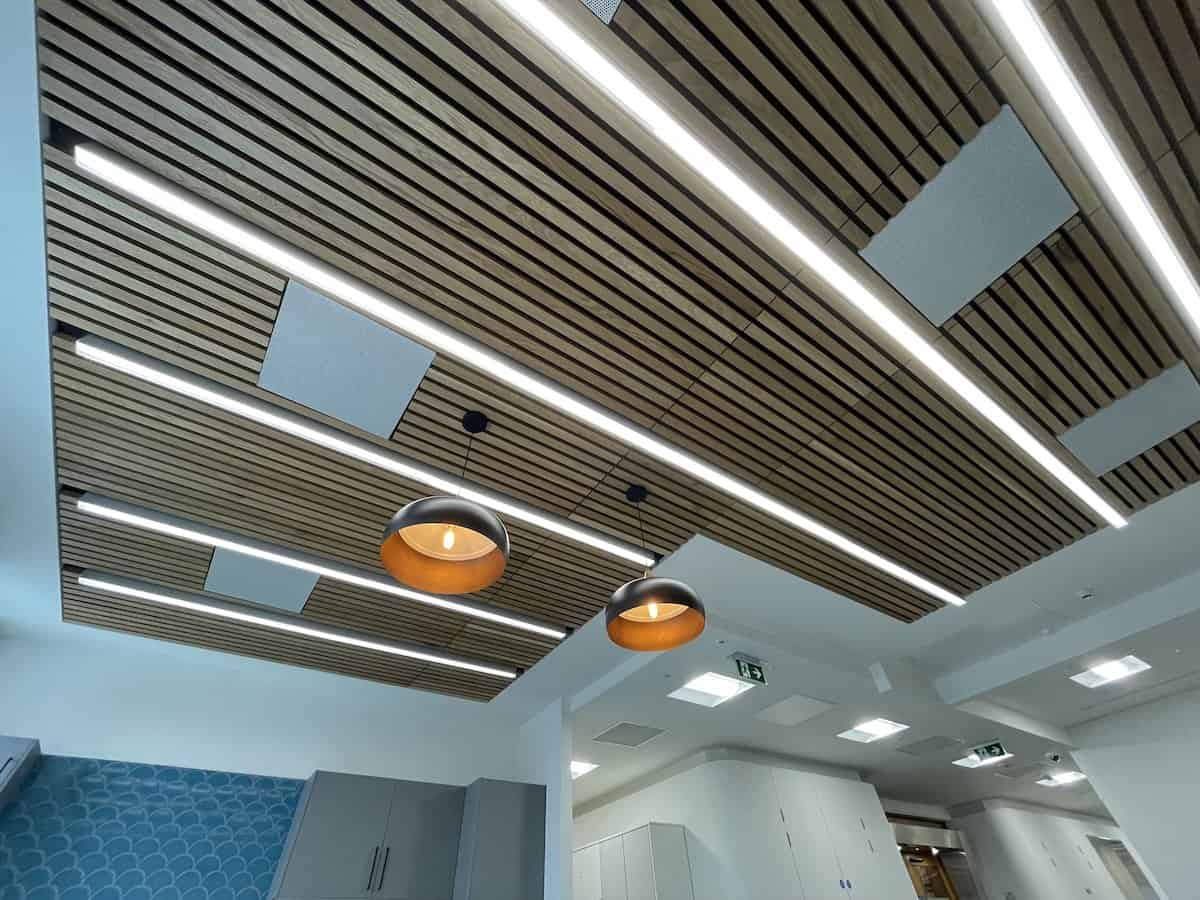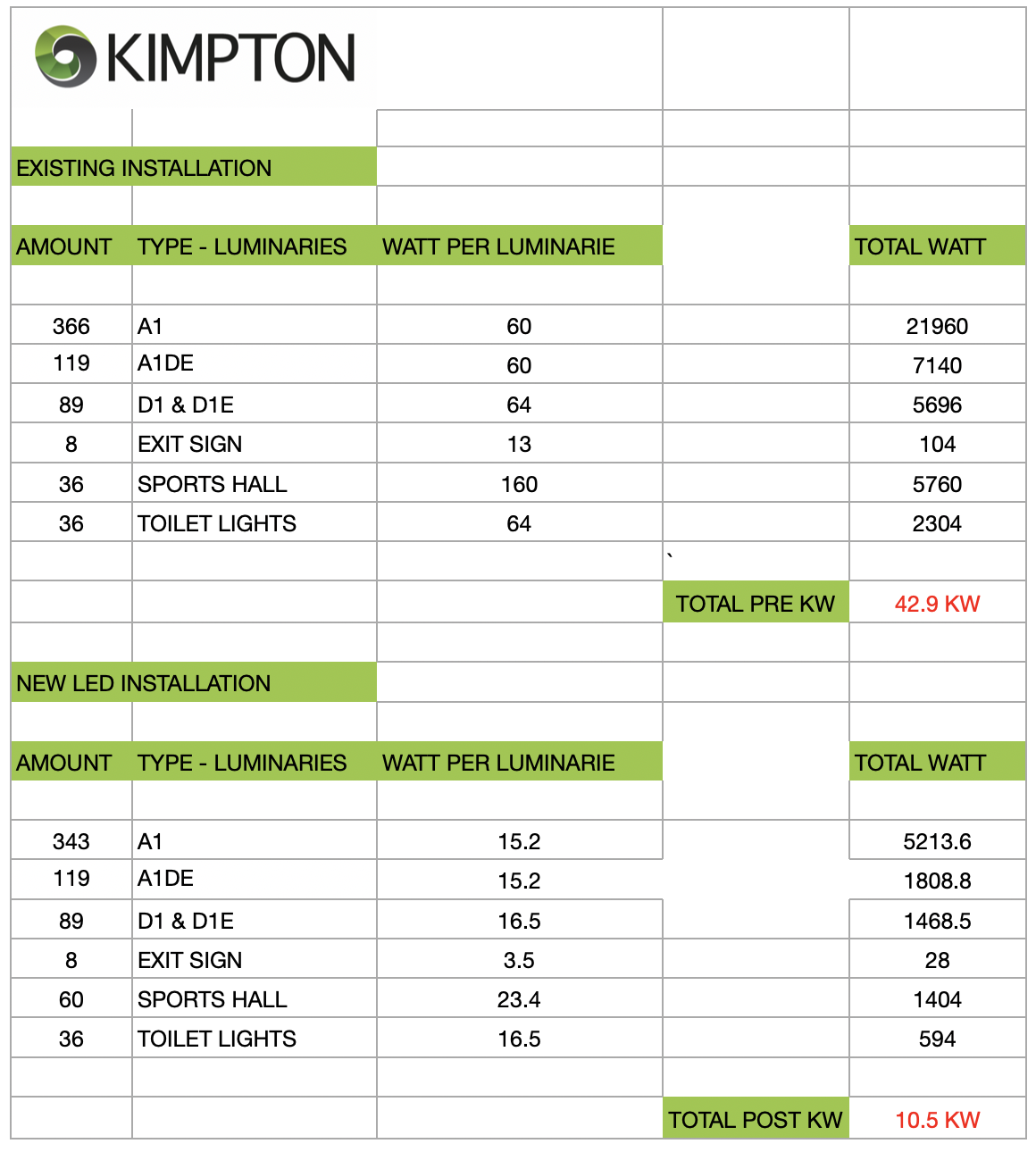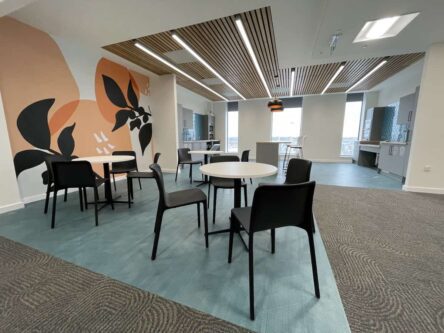
Traditional incandescent or fluorescent lighting is a carbon heavy technology that is expensive to operate and will deliver significant ongoing energy savings of over 50% if they are replaced with newer LED lighting. There is an LED equivalent for almost all existing fittings, or a suitable replacement for the whole unit if not.
Our team are experts in LED lighting replacement or upgrades. LED Lighting replacement makes financial sense, whether as a stand alone project, or as part of a wider decarbonisation strategy.
LED Lighting is a smart choice for businesses looking to improve energy efficiency, reduce operational costs, and enhance lighting quality. Paybacks can be within 12 months and with a much longer bulb life, savings will be delivered for many years to come.
If you would like to speak to our team about LED lighting or helping you along your own Carbon reduction pathway, then please give us a call on 0151 343 1963, email us on website@kimpton.co.uk or complete the form at the bottom of the page.

LED lighting is highly energy-efficient, consuming significantly less energy compared to incandescent and fluorescent lighting. LEDs convert a higher percentage of electrical energy into visible light, resulting in lower energy bills.
LED bulbs have a much longer lifespan than incandescent and fluorescent bulbs. They can last tens of thousands of hours, reducing the need for frequent and costly replacements and maintenance. Hard to reach bulbs in high roof voids are time consuming and expensive to replace, so minimising this requirement delivers additional ongoing savings.
Due to their energy efficiency and long lifespan, LEDs lead to substantial cost savings over time. Although the upfront cost may be higher, the reduced energy consumption and less frequent replacement cost make LEDs a cost-effective choice in the long run.
LED lighting provides high-quality and consistent illumination, offering excellent colour rendering and brightness control. This can enhance visibility and create more comfortable and appealing environments. A wide variety of bulb ‘colours’ are available from daylight to warm lighting which offers you the flexibility to choose.
Unlike older fluorescent tubes, LEDs light up instantly, with no warm-up time required. In contrast, fluorescent lights may take a moment to reach full brightness, and incandescent bulbs require some time to heat up.
LEDs emit light in specific directions, allowing for more focused and efficient lighting. This feature is particularly valuable in task and accent lighting applications.
Many of the newer LED bulbs are dimmable, offering flexibility to adjust light levels to suit different needs and moods. Dimmable LEDs can further save energy when full brightness is unnecessary.
LEDs waste very little energy on heat, unlike incandescent bulbs, which emit a significant amount of heat. This makes LED lighting safer and more comfortable in warmer environments and reduces the load on air conditioning systems.
LED lighting has a lower carbon footprint compared to incandescent and fluorescent lighting due to reduced energy consumption and longer lifespan. It is an excellent a simple step in your carbon reduction journey.
Fluorescent bulbs contain mercury, which can be harmful to both people and the environment. They also now require specialist disposal. LED bulbs do not contain hazardous materials, making them safer for disposal and handling.

The legal requirements for carbon reduction are now coming thick and fast for owners of commercial property. There are a whole new swathe of laws relating to lighting beginning in September 2023. We have covered much of the guidance in our article about improving your EPC rating here (link) and five quick wins to decarbonise your business here (link), which shows the extent of the savings that can be made with LED lighting replacements and upgrades.
September 2023 will see 2ft, 4ft and 5ft T8 fluorescent tubes phased out. In addition to this, Halogen G4, G9 and GY6.35 capsule lamps will also be outlawed.
All of these common lamp types have an LED counterpart that can provide the same level and warmth of lighting, but with a considerably lower running cost.
This second phase is more to do with an RoHS directive related to the mercury content in Compact Fluorescent Tubes (CFL) which will be phased out from February 2024. All remaining sizes of T8 style lamp and all T5 lamps will be banned.
From these dates, it will no longer be legal for anyone to sell or install these lamp types.
The savings and carbon reduction that can be delivered by replacement of existing lamps with LEDs is staggering. In one recent project, we delivered savings of £26,000 Per floor per year for an office complex with a dated lighting provision.
If you would like to speak to our team about LED lighting or helping you along your own Carbon reduction pathway, then please give us a call on 0151 343 1963, email us on website@kimpton.co.uk or complete the form at the bottom of the page.

Client: ACC Arena Location: Liverpool Waterfront Project: LED Lighting upgrades Project Manager: Greg Percival LED Lighting upgrades for M&S Bank Arena

Client: Crown Commercial Services Site: 39 Old Hall Street, Liverpool Value: £1.2m Project: Full floor by floor refurbishment Project Manager: Scott
If you would like to discuss any of our services, please call 0151 343 1963 or complete the form below and we will be in touch shortly.